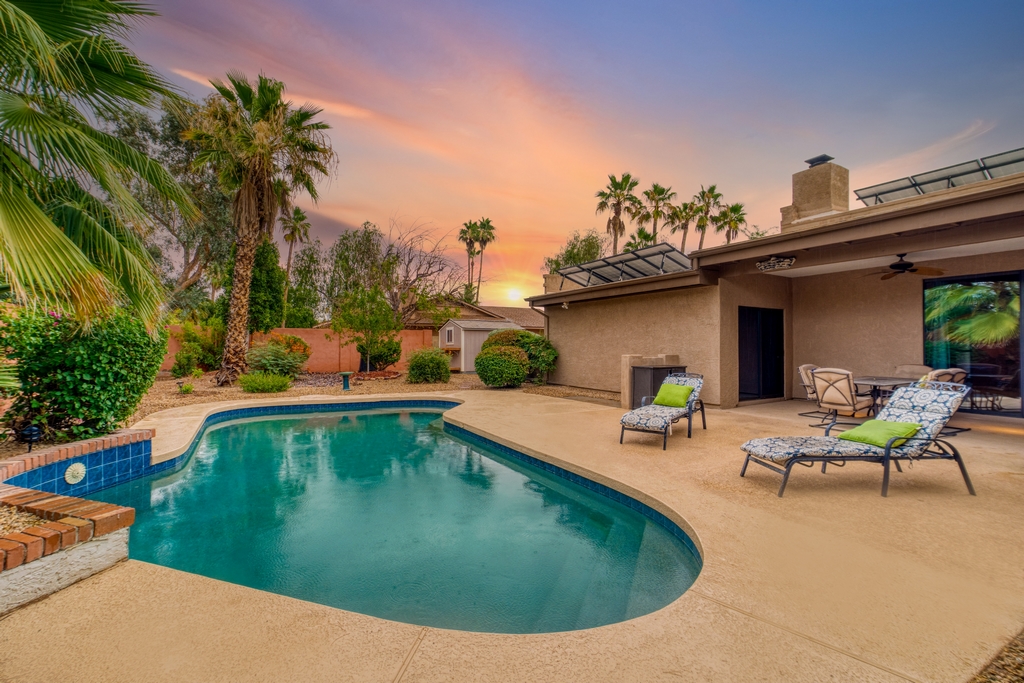Short-Term Rental Questions: Long-Term Answers?


Should pools at short-term rental properties be subject to commercial pool standards and codes? It’s a question that begs serious consideration, says Scott Cohen, given the nature of pools that are residential in scope and scale; but, in some respects, more like commercial watershapes in the way they are used.
By Scott Cohen
The growing prevalence of short-term rental (STR) properties raises an important set of questions about the standards and regulations applied to these hybrid spaces, particularly regarding safety features.
For nearly two decades now, platforms such as Airbnb, Vrbo and others have dramatically transformed the travel and hospitality landscape. What began as a niche idea—renting out spare rooms or vacation homes—has grown into a global phenomenon, offering travelers unique accommodations that combine comfort, convenience, greater privacy, broader choices, and a touch of local flavor.
STRs have reshaped the way people think about vacations, offering alternatives to traditional hotels. This shift has not only changed how people plan vacations but also how they interact with amenities, such as swimming pools, which are a highly sought feature for relaxation and recreation.
CHANGING TRAVEL NORMS
For families, STRs provide space to spread out, cook meals, and enjoy amenities often unavailable in standard hotel rooms. For solo travelers or couples, they offer the allure of unique experiences, such as staying in a rustic cabin, a beachfront condo, or even a castle. Affordability and flexibility have further contributed to the popularity of STRs, making travel accessible to a broader audience.
This shift has also spurred a preference for leisure-driven stays. Many travelers now prioritize properties with amenities that encourage relaxation and recreation on-site—pools, in particular, have become a cornerstone of the STR experience.
A swimming pool elevates an STR’s appeal, offering a private oasis for travelers seeking downtime. Unlike hotel pools, which are often shared and crowded, STR pools provide exclusive use, fostering a sense of luxury, privacy and security. Families appreciate the convenience of having a pool at their rental, while groups of friends view it as a social centerpiece for lounging and fun.
The allure of pools also reflects a broader trend in how people vacation. Travelers increasingly prioritize “staycation-style” experiences, where the property itself becomes part of the vacation, rather than just a place to sleep. For these guests, the pool is more than a feature—it becomes part of the destination.

Step Trim Tile: In commercial pools, step trim tile is required to make steps visible, minimizing slip and fall hazards. In residential pools, this safety feature is not mandated, leaving a higher risk for unacquainted users who might miss the step.
Depth Markers: Commercial pools require depth markers to prevent shallow diving accidents, an essential warning for guests. Residential pools lack this mandate, increasing the risk for guests who may be unaware of varying pool depths.
Handrails: Safe entry and egress is important in all bodies of water. For facilities that need to accommodate users with a variety of physical conditions and limitations, the presence of rails can be extremely important.
Float ropes and buoys: Designating the deep end within the pool itself helps keep unable swimmers from getting over their heads.
However, the growing popularity of pools in STR properties has introduced challenges. Guests unfamiliar with pool safety may face increased risks, and property owners must balance the appeal of offering a pool with the responsibility of maintaining it. This has prompted debates about whether STR pools should meet higher safety standards akin to commercial properties, a discussion fueled by the evolving nature of STRs as quasi-commercial ventures.
Yet, for the vast majority of properties, these pools are not built to commercial standards but instead follow local residential requirements, which in many places are very different and often less stringent.
THE KEY QUESTION
Should pools at STR properties adhere to commercial safety standards? This question sits at the intersection of guest safety, homeowner rights, and regulatory fairness. Given the transient nature of STR occupation, in many ways, the pools are used in the same fashion as pools at hotels, motels and resorts.
Because STR pools are typically designed and built on the same scale as typical residential pools, they are not subject to the same kind of volume use that we see in other types of commercial pools and therefore arguably should not be subject to all of the same requirements. STR pools, unlike traditional residential pools, serve a transient and diverse user base, guests who are often unfamiliar with the layout, features, and potential hazards. Short-term renters will not be up to speed with key safety factors, such as the pool depth or step locations.
Commercial standards, such as the use of step trim tiles and depth markers, are designed to mitigate risks like slips, falls, and shallow diving accidents. These standards ensure pools are visibly marked and structurally prepared to minimize injury, particularly for guests with limited swimming experience or children.
The same can be said of handrails and handicapped access, STR pools will inevitably be used by elderly or physically compromised bathers, who will benefit from ease of entry and egress.
MANAGING LIABILITY
Beyond guest safety, aligning STR pools with commercial standards provides clearer liability frameworks. For rental property owners, adopting these safety measures can reduce legal vulnerabilities and potentially lower insurance costs. Communities also benefit, as increased safety measures enhance overall neighborhood well-being and foster goodwill between STR operators and local residents.
However, implementing commercial standards raises logistical and philosophical questions about property classification. At what point does an STR property transition from a residential space to a commercial venture? Is it determined by frequency of rentals, income generated, or the scale of guest turnover? These ambiguities make it difficult to uniformly enforce regulations and risk, potentially burdening STR operators with undue compliance costs.
Critics argue that imposing commercial standards may deter participation in the STR market, especially if upgrades like depth markers or anti-entrapment compliance require costly renovations. Additionally, residential pool owners may resist perceived overreach, viewing such mandates as unnecessary for properties with sporadic rental activity.
A potential compromise lies in a tiered system of regulation. STR properties meeting specific thresholds—such as a high annual occupancy rate or exceeding a set income level—could be subject to a subset of commercial standards tailored for safety.
Basic measures like step trim tiles, depth markers, and compliant handrails could be required for STRs that meet defined criteria. Ensuring water quality through certified pool maintenance could be another minimally intrusive, yet effective, measure. Instead of mandatory upgrades, some jurisdictions might consider requiring STR operators to educate guests about pool safety or self-certify compliance with basic standards.
COLLABORATIVE SOLUTIONS
As STRs redefine the line between residential and commercial properties, a collaborative effort is essential. Policymakers, homeowners, safety advocates, and industry professionals would do well to work together in a shared effort to establish clear, fair, and effective regulations that prioritize safety without stifling the STR market.
In my opinion, as the STR industry continues to grow, it is vital to address safety concerns proactively. Applying commercial pool standards to STR properties, either fully or in part, offers a pathway to safeguarding guests while providing clarity for homeowners and insurers. By engaging all stakeholders in this evolving discussion, we can build a regulatory framework that reflects the unique needs and risks of STR properties.
By addressing these concerns, we can foster safer, more predictable environments for STR guests and property owners alike. My hope in writing this is to open a dialogue, inviting feedback, insights, and experiences from industry professionals, safety advocates, homeowners, and STR operators alike.
Together, we can develop a balanced approach to pool safety that respects both homeowner rights and guest welfare, ensuring the continued growth and safety of the short-term rental market.
Other distinctions include barrier requirements, anti-entrapment features, and lighting standards, which are more rigorously enforced in commercial settings. Given the nature of STR usage, these differences raise the question of whether certain safety standards should be universally applied.
Scott Cohen is a nationally respected expert witness in pool-construction defect cases. He currently serves as the chairman of the California Pool and Spa Association. Cohen is a “garden artisan” and president of Green Scene Landscaping & Pools, a watershape design and construction firm based in Chatsworth, CA. A widely published author and popular speaker, Cohen is known for his gardens that combine outdoor living with inspired artistic details.
Opening photo by Sergey Novikov | Shutterstock; side bar photo by Allison H. Smith | Shutterstock; bottom photo by Nuva Franex | Shutterstock.









